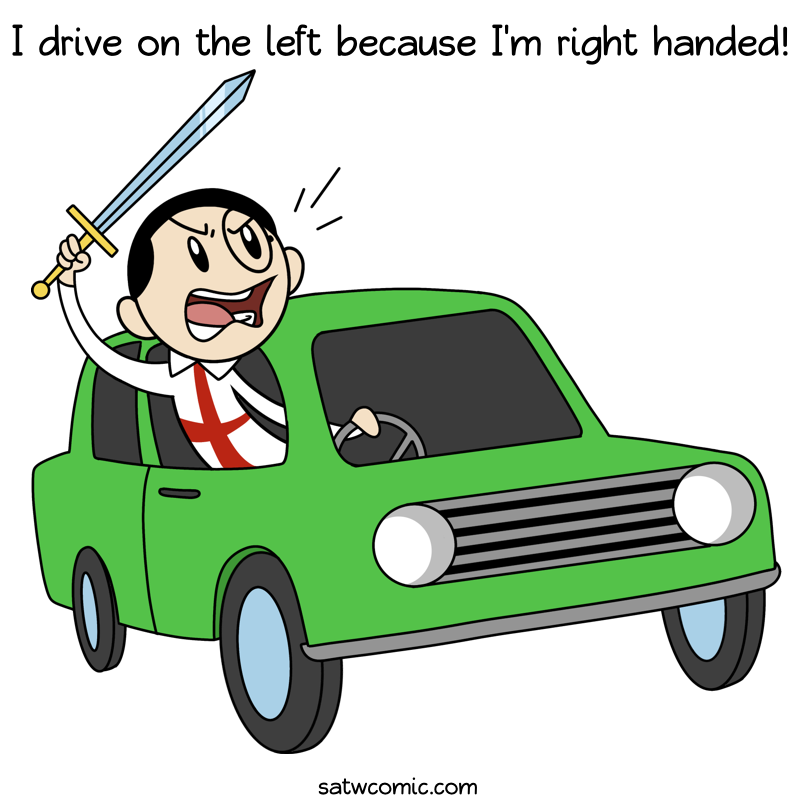
Knights of old
Driving on the left side goes back to Medieval England where Knights would ride their horses on the left side of the road so if they encountered an enemy their sword hand would be on the right side.
England has never let go of this, and is still ready to sword fight to this day.
England
25th January 2024
2 years ago #9880107
4
0
It goes back all the way to the Romans, not to the Medieval period - and was common across Europe right up until the French Revolution. Because the French royals had always ridden on the left, the French decided to swap to the other side because "republic!" Napoleon, who was left-handed and found it easier to fight from the right, spread the new system everywhere he conquered. America began driving on the right, too, because of the way the seats on their wagons were arranged. Britain never met Napoleon's army in the British Isles, so it kept to what was then the standard way - as still used by about 40% of the world's population.
1 year ago #9882159
3
0
Almost six month to the day since the last update. I think we can sadly classify this as a dead comic by now... Shame really 
2 years ago #9882038
3
0
For those who don't know February "comic" which honestly was just a picture from the calendar was moved to odds and ends which you can find under more
2 years ago #9880129
3
0
Have any of you driven a cart or carriage? You sit on the right with the whip in your right hand, it keeps it out of the load behind you. Not quite a sword, but carts are more common than mounted knights. Still intimidating.
2 years ago #9880087
3
0
Driving on the left is inferior to driving on the right. Sorry, England. This is because with a left hand steering wheel, you can switch gears, steer, and indicate, all at the same time. You can't do that with a right hand steering wheel, as the indicator stalk is on the left of the steering wheel, and your left hand is busy shifting gears. And I run into this issue all the time, whenever I get to an offset road. You know, like you come to a main road and you need to make a left and then immediately make a right. With the steering on the left I can flick the indicator stalk as I am moving the steering wheel.
2 years ago #9880152
2
0
You can shoot a gun with either hand. That's the only reason Americans don't drive on the left.
Add comment: Please Sign in or create an accout to comment.



 Support the comic on
Support the comic on 




















38